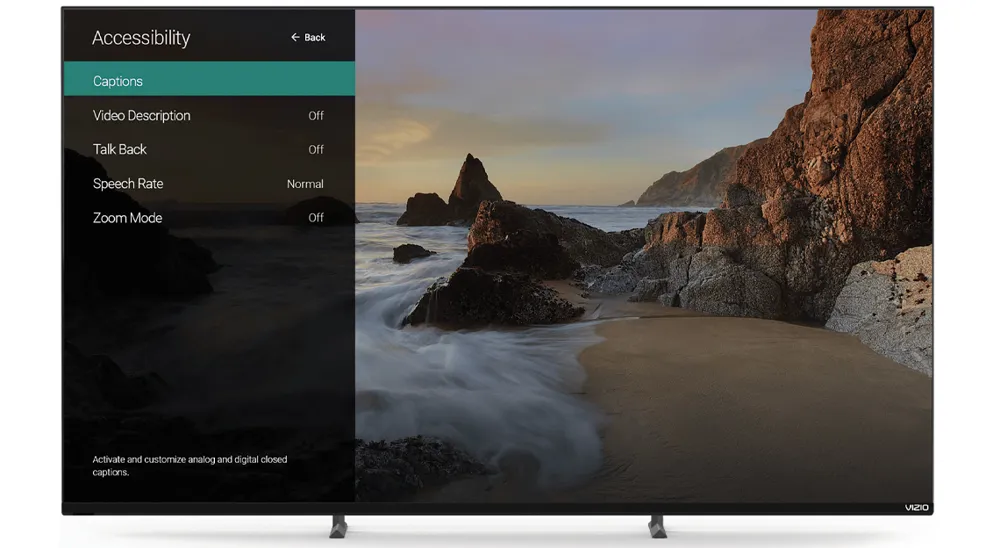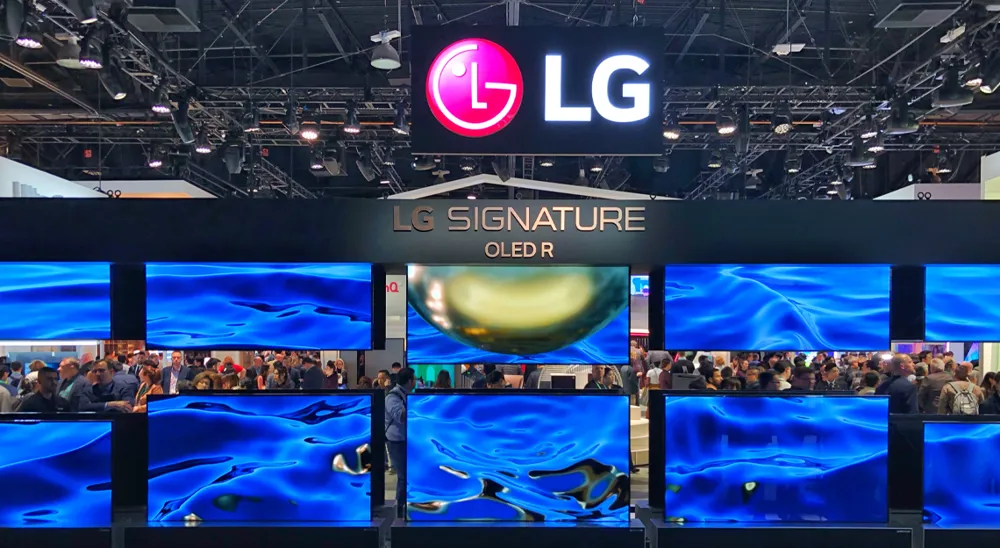Equal Access
December 21, 2022
From niche to mainstream, universal design improves video accessibility for all.

From niche to mainstream, universal design improves video accessibility for all.
Viral memes and TikTok videos frequently employ an attention-grabbing tactic that may not be memorable but is essential to their success: captions.
Captions and on-screen text pervade today’s social videos and shareable content, but the world was a lot different in 1971, when the Captioning Center (now Media Access Group at GBH) launched. Another nine years of industry development and advocacy finally brought closed-captioned decoders to market. Fast forward to today, when captions integrate with TVs and smartphones and drive many accessibility features that ensure everyone enjoys access and can use those devices.
Accessibility “is about ensuring that it is not tech for tech’s sake, but that the experience is available to all. It takes on many forms, now with more capabilities thanks to smart, connected products and voice-enabled features,” says John I. Taylor, LG Electronics USA’s senior vice president for public affairs and communications. “Consider how far we’ve come from early work on closed captioning for TVs, pioneered by Zenith three decades ago.”
Accessibility touches every piece of the tech ecosystem, and the home theater space shows many examples of the advances made in reaching a broad audience.
Following passage of the Decoder Circuitry Act in 1990 (the same year when the Americans with Disabilities Act passed), TV manufacturers were required to include products with closed caption decoders by 1993. That jump-started a rapid expansion of captioning in tech products, along with new ways of engaging with content and entertainment that continue to evolve today.
Responding to Consumer Needs
Sharing a commitment to accessibility and equity, CTA and member companies support U.S. laws and regulations governing the accessibility of communications technology and services to people with disabilities, including the FCC’s successful implementation of the Twenty-First Century Communications and Video Accessibility Act of 2010 (CVAA).
Smart frameworks provide the consumer technology industry with the flexibility necessary to innovate and improve accessibility features in consumer products and adapt them to evolving consumer demands. Ongoing advances in the accessibility and usability of consumer electronics benefits all users and people with disabilities, and their advocacy organizations are at the table with industry as new and improved TVs, operating systems, apps and electronics are designed.
Known as a value brand, for us, value always stood for bringing people the best, and we promote accessibility.

Universal Design
Ronald L. Mace pioneered the concept of universal design, which makes all products and their built environment aesthetics usable (to the greatest extent possible) by everyone, regardless of their age, ability or status in life. A devoted advocate for the rights of people with disabilities, Mace founded and directed the Center for Universal Design at North Carolina State University.
Universal design principles benefit tens of millions of Americans with hearing and significant vision loss, as well as those with mobility or cognitive challenges. By 2030, all baby boomers will be older than age 65, and this rapidly growing number of older Americans will require even more accessible products and features that will meet their needs.
The social good of universal design and its natural accessibility to customers boosts the return on investment. According to the World Economic Forum, companies that focus on inclusion realize 28% higher revenue, double net income and 30% higher profit margins. Product accessibility and universal design doesn’t happen in a vacuum.
“Samsung works in close collaboration with organizations like the American Foundation for the Blind and Shepherd Center to develop meaningful, inclusive innovations equipped with the proper features to offer accessibility to all consumers,” says John Godfrey, senior vice president for public policy at Samsung Electronics America.
The Carl and Ruth Shapiro Family National Center for Accessible Media at WGBH “from the start has been focused on sensory disability. GBH invented captions for broadcast TV in the early 1970s as an accessibility solution; 20 years later we invented ‘audio descriptions’ for broadcast TV and were first to market with GBH,” says Bryan Gould, NCAM’s director. The center started as a research and development group “to advance those two technology solutions, and to answer the question of how we get captions and descriptions everywhere.”
NCAM works with companies like LG to improve accessibility conformance and usability in an iterative and ongoing way.
At Sony, an inclusive design process embraces a diverse set of product users, including those with disabilities, to ensure shared understanding is incorporated into final product designs.
“Accessibility and usability have a direct correlation. Ease of use for everyone is important,” says Mike Nejat, VP of engineering at Sony Electronics. The company leverages a global affinity network to collaborate on accessibility, and gains input on new products and features from the Braille Institute and California State University Northridge Center on Disabilities.

Setting New Standards
CTA developed the standard for digital television closed captioning, CTA-708. Today, CTA-2115, Closed Caption Accessibility Settings, defines a standard vocabulary for communicating accessibility-related media settings to reduce frustration over the terms used for closed caption, language, and audio description preferences.
“Our work at CTA and with our members is supported by standards and driven by accessibility,” says CTA Senior VP of Research and Standards, Brian Markwalter. “Take the usability of accessibility settings on devices: Right now it’s hard for consumers to use, and you can’t simply set your settings one time and have them work across all your devices. We’re looking at how to develop standards to support the users’ accessibility preferences, so they stay constant and let them ‘set it and forget it.’ ”
When it comes to supporting independent lives, Vizio’s Ciaran O’Lionaird sees accessibility through different lenses and the democratization in TV. “Known as a value brand, for us, value always stood for bringing people the best, and we promote accessibility. We’ve leaned into serving U.S. and Canada French language. We’re looking into Latin-focused channels and plan to invest more in understanding how the content can be captured,” he says.
Consumers also count on the smart home to leverage content and entertainment accessibility. “We see more consumers using Amazon Echo and Google to control home theater, so we make it easy for consumers to easily talk to and control the device. It improves the customer experience to talk to the TV directly,” says Stephen Yao, assistant general manager at Hisense USA.
There are opportunities as an industry to serve people with cognitive disabilities, for example incorporating dyslexic scripts.
Future State
“Captions are essentially ubiquitous, and in many ways we are approaching universal design. As more people find utility in accessible content, then that’s only a good thing as people understand it’s necessary and good,” NCAM’s Gould says. “We’ll see interfaces everywhere in many aspects of life, and we’ll continue to see this focus. Organizations know more than they used to because of adoption.”
TV operating systems will include artificial intelligence and learn user behavior, Hisense’s Yao predicts: “The most used navigation optimization will help consumers access the content that they want, and we’ll balance privacy concerns and provide consumers the features they want.”
LG’s Taylor views accessibility “as a journey not a destination,” and he recognizes work remains to be done. “There are opportunities as an industry to serve people with cognitive disabilities, for example incorporating dyslexic scripts.”
CTA’s Commitment
CTA continues to explore how next-generation technologies can improve accessibility. “Every step of the way, the consumer technology industry will ensure that accessibility is central to innovation and that the disability community is part of the design and testing of consumer technology,” says Gary Shapiro, president and CEO, CTA.
CTA invests in supporting older adults and people with disabilities through the CTA Foundation. The charitable foundation has supported 68 organizations across the United States with more than $6.3 million in funding for programs using technology to improve the lives of older adults and people with disabilities.
Accessible Innovations
As TV accessibility features evolve, they have become more responsive. Top features today include:
Audio descriptions
Many broadcast and streaming services provide extra audio tracks with narration about what’s happening in a scene.
Bluetooth
Improves connectivity with headphones and speakers and allows input of audio from a range of devices.
Closed captions (subtitles)
Now standard in TVs, often available in many languages, and customizable.
Live captions
Native features in smartphones or headphones listen to audio in the room or on screen and put captions on a phone or tablet screen.
Sign Language Zoom
AI-enhanced algorithms automatically recognize sign language and magnify the person performing it.
Voice control and Accessibility
Shortcuts are found on many remotes, phones, smart home devices and even cars, allowing increased ease of use to navigate TV content and settings.
Voice+ dialogue
Featured in NEXTGEN TV broadcasts, boosts dialogue to consistent volumes, ensuring background noise never steals the scene.
CES highlights innovation in accessible technologies as they evolve each year: From advanced screen readers for braille displays to adaptive devices for gaming, the world’s top brands keep making technology more accessible. From pitch competitions for accessible products and services to an annual accessibility forum, CES® 2023 will feature more inclusive design than ever before.
Join our community of innovators and shape the future of technology.



